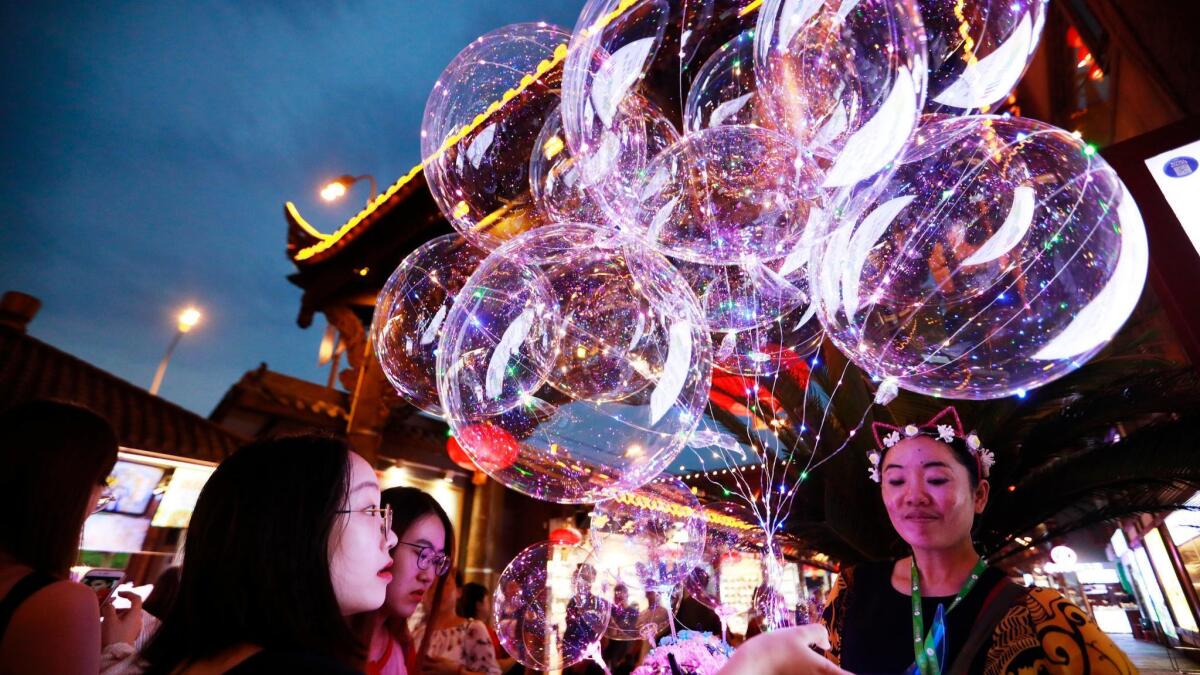Hard-pressed Chinese consumers are key to keeping the world’s second-largest economy on track

For the growth driver that will keep the world’s second-largest economy on track this year, look beyond Beijing or Shanghai.
Life for many in China’s most sophisticated consumer markets is getting harder, with soaring rents gnawing at disposable incomes. As President Trump’s trade war with China begins to threaten the economy in earnest, with tariffs on an additional $200 billion of goods potentially arriving this week, the resilience of the economy will depend to a large extent on the confidence, or otherwise, of shoppers in smaller cities.
Consider Fu Ran, a 29-year-old architect in Beijing. His rent already sucked up about half his monthly income when he was told last month that it would increase 30%, to 4000 yuan ($586) a month. Although he trained at the prestigious Tsinghua University nearby, Fu now mocks himself as “highly educated but broke.”
With few funds left each month, Fu says he’ll have to cut expenses on dining out, socializing and travel. His case resonates with the so-called consumption downgrade that’s become part of social media chatter. But as consumption, including some government spending, now contributes more than two-thirds of annual output growth, such a development matters for policy makers.
Elsewhere, though, things are different, and the massive shift of China’s population upward in the wealth stakes continues. Although retail sales growth slowed sharply in 2018 to below 9% year on year, that may not capture the full picture. Indeed, spending as recorded by the government’s quarterly household survey has accelerated.
“Many people might feel the pressure to cut expenses, for example like young graduates hit by the rising rents, or the savers who lost money due to defaults of peer-to-peer lending platforms,” said Tommy Xie, an economist at Oversea-Chinese Banking Corp Ltd. in Singapore. “But if you look at spending on overseas tourism, which is a good indicator of how wealthy people feel about themselves and how optimistic they are, the number is quite sound.”
Tourism is indeed holding up, with 71.3 million visits abroad made in the first half of this year, up 15% on the year. But getting a reading on the ups and downs of people’s readiness to spend in China is still not easy. There’s no closely watched monthly gauge of consumer sentiment as in the U.S., and high-frequency data like retail sales don’t cover the full range of spending in a modern economy, such as online shopping and services like travel, education and healthcare.
That leaves executives with an incomplete picture when estimating their chances of success — a bad state of affairs when an extra shock like tariffs comes along.
Kyle Francis Gendreau, chief executive officer of luggage-maker Samsonite International SA, said in an interview last week that trade-war noise will translate into slower sales growth for his company in China this year.
In smaller cities, where cost-of-living pressures are less, people are still upgrading lifestyles.
In Nanjing, more than 600 miles from the capital in the southeast, 33-year-old Guo Ying has just bought a BMW 520 model. It cost him 420,000 yuan ($61,480). An engineer and a father of a preschooler, Guo chose to pay in installments, but overall he felt comfortable with the spending.
The divergence between big cities and smaller ones shows up in surveys. Data analytics company Nielsen’s China Consumer Confidence Index, for example, saw second-tier and third-tier cities outperforming first-tier cities, which reported a decline of confidence in the second quarter.
Fu and Guo together make a fuller picture of China’s consumption culture. There is evidence that the nation’s spending power may weaken in the short term, but a derailment of the nation’s broader shift to an economy driven by consumption rather than exports and investment is far-fetched.
Wang Tao, head of China economic research at UBS AG in Hong Kong, says that although consumption is likely to slow further into 2019, the underlying trend should continue.
“Continued improvement in household credit access, and the continuation of reforms focusing on supporting job creation and improving the social safety net should support real consumption growing at 6% to 7% in the next few years, with the downside risk mainly coming from a full-scale trade war and/or a deep property downturn,” she said.





